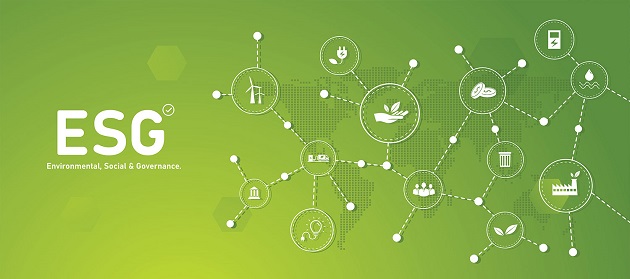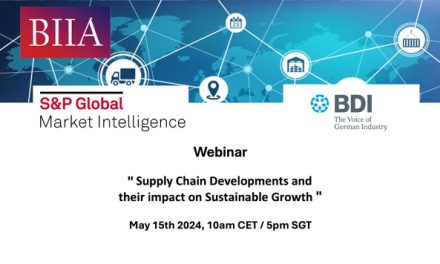Fidelity’s Dhananjay Phadnis, portfolio manager, Fidelity International, looks at the good side of rating diversity
 When it comes to choosing a university or buying a car, comparative ratings can help us make better decisions. But what happens when rankings diverge – or worse, contradict one another? Should they be disregarded, or can they still deliver valuable information?
When it comes to choosing a university or buying a car, comparative ratings can help us make better decisions. But what happens when rankings diverge – or worse, contradict one another? Should they be disregarded, or can they still deliver valuable information?
It’s not just a question for university aspirants or car buyers. In the financial world, ratings divergence is a topic of intense debate, especially when it comes to ESG ratings. Some critics have cited the divergence of sustainability ratings as part of an argument that ESG investing as an integrated strategy should be jettisoned altogether. “Deeply flawed” is how a recent cover story in The Economist summarised it. As a solution, it recommends a narrow approach focusing on only explicitly quantifiable metrics like emissions.
Meaningful impact requires more than one metric
A narrow approach risks throwing out the baby with the bathwater. At worst, it would abandon meaningful improvements in other areas; at best, it makes perfection the enemy of progress.
Take the challenge of ESG ratings divergence. For starters, the comparison with credit ratings is inappropriate. Credit ratings try to assess one main parameter – probability of default – whereas ESG ratings take into consideration a multitude of factors in deriving a final rating.
The more appropriate comparison for ESG ratings is with something like US university rankings – where ratings providers use multiple factors such as graduation rates, faculty resources, surveys, etc. The rankings that result continue to be debated intensely; ESG ratings will be no different.
Why do ESG ratings diverge?
According to one recent study, correlations among ESG ratings ranged from 0.38-0.71. That’s a lot of room for divergence. But there are good reasons for this, given the current state of ESG investing:
- Providers apply different views as to which factors have material impacts on E, S or G factors and at different weights
- Number of data points used – including proprietary data sets & AI tools
- Relative basis within a given sector or on an absolute basis
The good side of ratings divergence: The case for diversity
Several global regulators and organisations have studied the issue of ESG ratings divergence, and while acknowledging challenges, their conclusions also highlight some distinct pluses to current approaches.
Papers published by groups including the International Organization of Securities Commissions (IOSCO), Financial Markets Standards Board (FMSB) and International Regulatory Strategy Group (IRSG) broadly agree that a diversity of views, independent methodologies, subjective judgement, innovation and competition can be beneficial to markets and investors.
They however caution against mechanistic approaches characterised by overreliance on ESG ratings. And if there is one common, overarching goal, it is data standardisation.
Simplification to isolate ESG factors isn’t so simple (for now)
Simplification has undeniable benefits, but even this data-driven approach may not be as straightforward as it appears. Consider these challenges to quantifying emissions: While over 13,000 companies participate in surveys by CDP, data on Scope 1 (direct) and Scope 2 (indirect) emissions is still quite scant.
According to MSCI, Scope 1 & 2 disclosure rates were below 40% for MSCI ACWI constituents, while Scope 3 disclosure rates (emissions up and down the value chain) were below 25%.
Attempts to address the problem of incomplete data can in many cases, lead to more – not less – ratings divergence. Emissions data vendors try and bridge this data gap via varied techniques, including using alternative sources, their own proprietary tools, various estimation methods and including targets announced by companies.
Narrow focus comes with significant risks
A narrow focus risks missing a key point; a company’s governance and conduct in society are also critical to ensuring it delivers on its intended goal in other areas, including emissions.
We have long argued that any company that ignores stakeholders is bound to get tripped up at some point. Profit maximisation sought by companies such as Purdue Pharma was unsustainable given the significant harm to customers and communities as its products helped fuel the US opioid epidemic. Electric truck maker Nikola, whose stock price has plunged since its now departed founder was investigated for making false and misleading statements, is another cautionary tale.
No substitute for hard work
In time, industry and regulatory efforts to standardise the spectrum of ESG data and improve disclosures will help make ratings more comparable, and perhaps correlations will increase as a result. Until then, market participants will need to do their homework to understand the process that underpins a given ESG rating, or even better develop a robust proprietary method for ESG ratings.
At the same time, investors should appreciate that divergence in ESG ratings also signals a diversity of views – and that’s never a bad thing.
Source: ESGClarity
About: ESGClarity is part of the Bonhill Group plc, which provides news, events & research aimed at wealth managers, investment IFAs and other professional fund pickers and asset allocators in the UK, Europe, Middle East and Asia Pacific regions.


























